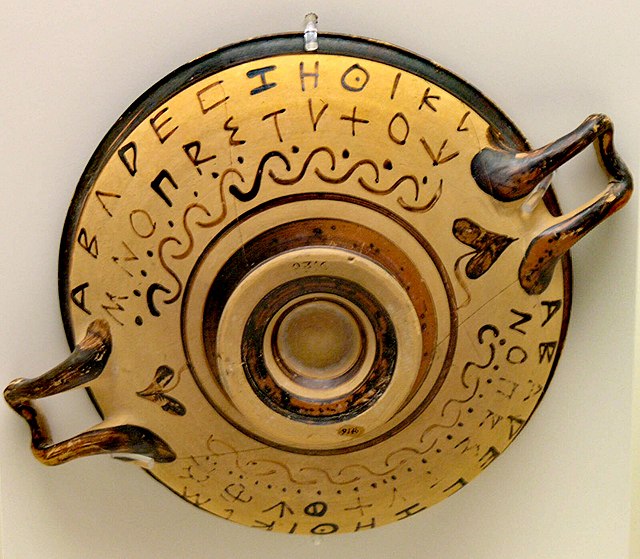Beta is the second letter of the Greek alphabet. In the system of Greek numerals, it has a value of 2. In Ancient Greek, beta represented the voiced bilabial plosive IPA: [b]. In Modern Greek, it represents the voiced labiodental fricative IPA: [v] while IPA: [b] in borrowed words is instead commonly transcribed as μπ. Letters that arose from beta include the Roman letter ⟨B⟩ and the Cyrillic letters ⟨Б⟩ and ⟨В⟩.
The Greek alphabet on an ancient black figure vessel, with the characteristically angular beta of the time
The Greek alphabet has been used to write the Greek language since the late 9th or early 8th century BC. It is derived from the earlier Phoenician alphabet, and was the earliest known alphabetic script to have distinct letters for vowels as well as consonants. In Archaic and early Classical times, the Greek alphabet existed in many local variants, but, by the end of the 4th century BC, the Euclidean alphabet, with 24 letters, ordered from alpha to omega, had become standard and it is this version that is still used for Greek writing today.
Dipylon inscription, one of the oldest known samples of the use of the Greek alphabet, c. 740 BC
Early Greek alphabet on pottery in the National Archaeological Museum of Athens
A 16th-century edition of the New Testament (Gospel of John), printed in a renaissance typeface by Claude Garamond
A page from the Codex Argenteus, a 6th-century Bible manuscript in Gothic




